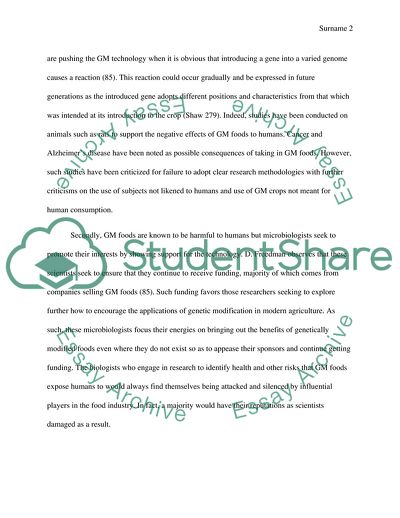Cite this document
(The Raging Debate on GM Foods Essay Example | Topics and Well Written Essays - 1250 words, n.d.)
The Raging Debate on GM Foods Essay Example | Topics and Well Written Essays - 1250 words. https://studentshare.org/biology/1818395-gm-food
The Raging Debate on GM Foods Essay Example | Topics and Well Written Essays - 1250 words. https://studentshare.org/biology/1818395-gm-food
(The Raging Debate on GM Foods Essay Example | Topics and Well Written Essays - 1250 Words)
The Raging Debate on GM Foods Essay Example | Topics and Well Written Essays - 1250 Words. https://studentshare.org/biology/1818395-gm-food.
The Raging Debate on GM Foods Essay Example | Topics and Well Written Essays - 1250 Words. https://studentshare.org/biology/1818395-gm-food.
“The Raging Debate on GM Foods Essay Example | Topics and Well Written Essays - 1250 Words”. https://studentshare.org/biology/1818395-gm-food.


